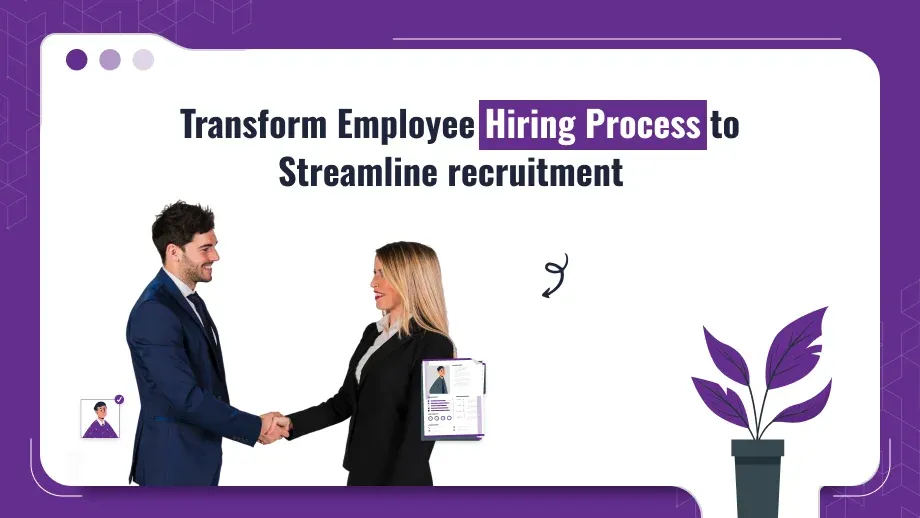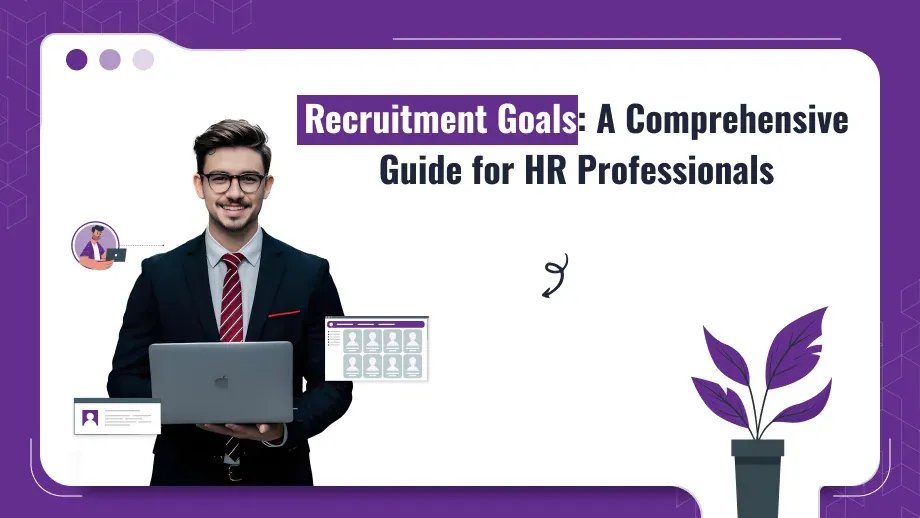
The Hiring Process in India has experienced a massive change in later a long time, driven by progressions in innovation, a competitive work advertise, and advancing desires from both managers and work searchers. For HR experts, recruiters, and CHROs, the center has moved towards building a strong and productive employee contracting pipeline that not as it were ensures compliance with local labor laws but also pulls in the best Global talent pool in businesses like IT, funds, and BPO.
With apparatuses like Applicant Tracking Systems (ATS), background look programs, and video meeting stages getting to be common in Indian work environments, HR groups are presently way better prepared to handle the challenges of the cutting-edge IT enrollment handle, from screening resumes to onboarding unused enlists. This move is significant, given India’s differing and quickly developing ability pool.
Understanding the Stages of the Employee Hiring Process
Every hiring process, whether for huge enterprises or small businesses, takes after an essential structure. Here’s a breakdown of the most imperative stages and their pertinence to Indian recruiters:
Job Analysis and Defining the Role
The hiring process and enrollment preparation start with a point-by-point work investigation to characterize the abilities, capabilities, and encounters required for the part. In India, this organize is vital as it makes a difference in companies addressing particular challenges in their businesses, such as the requirement for innovation aptitudes in IT or compliance with directions
Sourcing Talent: Finding the Right Candidates
The following step is sourcing candidates through work entrances, referrals, social media, or IT enrollment offices. Indian selection representatives frequently utilize stages like Naukri, LinkedIn, and Without a Doubt, as well as tapping into campus arrangements in chief teachers like IITs and IIMs to draw in the best ability. It’s fundamental to keep up a differing sourcing procedure to guarantee the company comes to candidates over cities like Bengaluru, Delhi, and Hyderabad, as well as level 2 and 3 cities where covered-up ability frequently lies.
Screening and Shortlisting Candidates
Once resumes begin pouring in, the screening preparation starts. This can be robotized utilizing ATS apparatuses that filter through hundreds of applications, highlighting those that best coordinate the work prerequisites. In India, with its huge number of candidates, screening innovation is crucial for scouts to oversee the tall volume of resumes without losing out on quality candidates. An exhaustive screening guarantees that HR groups can productively waitlist those who meet the criteria for assist interviews.
Streamline Your Hiring Process for Success
Attract top talent, streamline interviews, and enhance candidate experience with a seamless, customizable solution.
Conducting Interviews: A Key Step in the Employee Hiring Process
Types of Interviews Common in India
The meet prepared in India changes based on the industry and the level of the position. Common groups include:
- Face-to-face interviews: Still the standard for numerous organizations, particularly for senior-level roles.
- Video interviews: Popular for remote employee hiring process and recruitment for companies trying to reduce hiring time and costs. Video interviews are progressively common in India’s tech and BPO sectors.
- Panel interviews: Regularly utilized for assessing candidates for key parts, where different partners are included in the decision-making process.
Cultural Fit: A Major Consideration
In India, social fit plays a noteworthy part in the employee hiring process. Companies look for candidates who do not as it were have the required abilities but also adjust to the organization’s values. Understanding a candidate’s flexibility to work environment culture, role and importance of communication, and group elements can offer assistance to diminish steady loss rates and guarantee long-term success.
Background Verification: Ensuring Trust and Compliance
A basic portion of the contracting and enlistment preparation is foundation confirmation, which makes a difference guarantees that candidates are honest almost their capabilities and work involvement. As examined in past blogs, foundation checks in India are crucial due to the predominance of false claims in segments like IT, funds, and healthcare. Mechanized foundation look computer program makes a difference in HR groups confirming criminal records, instruction qualifications, and work history, in this manner relieving representative employee hiring risks.
Onboarding: Setting the Stage for Long-term Success
Onboarding is the last step in the streamline hiring process, where modern representatives are presented to the company culture, approaches, and their parts. In India, proficient onboarding is basic due to the competitive nature of segments like innovation and BPO, where representative turnover is high. A compelling onboarding preparation decreases modern enlist uneasiness and makes a difference in progress maintenance rates by guaranteeing that workers feel backed from day one.
Modern HR devices permit consistent onboarding by digitizing printed material, conducting virtual preparation sessions, and giving access to assets that unused workers require to settle in rapidly. Companies in India are progressively embracing HRMS arrangements, such as Superworks, to streamline this preparation and keep the move smooth for modern contracts.
Leveraging Technology to Enhance Employee Hiring Process
In today’s computerized age, innovation is revolutionizing each angle of trade, and the contracting preparation in India is no exception. With an expansive and geologically dispersed ability pool, companies are increasingly turning to innovation to make strides in effectiveness, decrease costs, and improve the candidate experience.
Applicant Tracking Systems (ATS) for IT Hiring Process
ATS stages have ended up the spine of the IT recruitment handle, making a difference in HR groups managing applications, The effect of communication with candidates, and streamlining workflows. In India, where high-volume IT enlistment is common, ATS stages permit companies to:
- Automate Continue Screening: ATS software can naturally parse resumes, looking for catchphrases and skills that coordinate work descriptions. This diminishes the manual exertion required to filter through hundreds of resumes and guarantees that as it were qualified candidates move forward in the hiring process.
- Simplify Communication: ATS apparatuses make it simpler to communicate with candidates, plan interviews, and send robotized follow-ups. This is particularly critical in segments like BPO, where virtual recruiters are regularly required to lock in with candidates over numerous touchpoints.
- Track and Analyze Information: With ATS stages, HR groups can screen key metrics such as time-to-hire, cost-per-hire, and candidate drop-off rates, empowering data-driven decision-making and continuous preparation improvement.
Video Meeting Stages: A Modern Standard in Inaccessible Hiring
With the rise of further work, video meeting stages have become a vital apparatus for enrollment specialists. In India, where tech ability is exceedingly sought after, companies utilize these stages to:
- Reach a More Extensive Ability Pool: Video interviews permit companies to lock in with candidates from all over the nation, lessening the requirement for travel and extending the geographic reach of their IT enrollment efforts.
- Enhance the Candidate Encounter: Video meetings are helpful for candidates, permitting them to meet from the consolation of their homes. This adaptability can pull in more candidates, particularly those with tight plans or those dwelling in diverse cities.
- Record and Share Interviews: HR groups can record video interviews, making it simpler to include numerous partners in the contracting choice. This includes is especially useful for senior parts where cross-functional group input is necessary.
AI and Machine Learning: The Future of Enlistment in India
Artificial Insights (AI) and Machine Learning (ML) are starting to reshape enrollment by automating errands, anticipating candidate victory, and giving more profound bits of knowledge to the enlisting handle. In India, where competition for best ability is furious, AI and ML can:
- Improve Candidate Matching: AI-powered stages analyze candidate profiles and foresee how well they will fit into a part, based on their aptitudes, involvement, and social fit. This can altogether diminish the time spent on manual screening.
- Enhance Differences Contracting: AI apparatuses can evacuate oblivious predisposition from the enlisting handle by centering exclusively on candidate capabilities and involvement, without being impacted by components such as sexual orientation, ethnicity, or age.
- Optimize Work Depictions: Machine learning calculations can analyze work portrayals and recommend advancements to pull in more qualified candidates. This makes a difference HR groups refine their postings to way better adjust with the ability pool they need to target.
Mobile Recruitment: Engaging Candidates On-the-Go
With India’s developing versatile client base, versatile enlistment has ended up a basic viewpoint of locks in candidates. Numerous work searchers presently favor applying for employment, going to interviews, and remaining upgraded through their smartphones. Companies can take advantage of portable innovation by:
- Mobile-Friendly Work Applications: Guaranteeing that work applications are mobile-optimized permits candidates to apply from their phones, expanding the probability of pulling in ability, especially among more youthful generations.
- Recruitment Apps: A few companies are creating committed enlistment apps where candidates can track the status of their applications, get notices, and associate with the HR team – all through their portable devices.
- SMS and WhatsApp Enrollment: In India, where versatile informing is predominant, companies are utilizing stages like WhatsApp for candidate communication, meeting planning, and indeed shortlisting. This approach makes the enrollment.
Conclusion: Optimizing the Hiring Process for Success
For Indian companies, optimizing the hiring process is crucial to staying competitive in an increasingly world market. By leveraging modern-day recruitment technologies, HR professionals can streamline sourcing, screening, and onboarding, all whilst ensuring compliance with India’s employment laws.
The key to a successful hiring technique in India lies in balancing speed with thoroughness—hiring top talent quickly while making sure that each candidate is properly vetted. With the right tools and strategies in place, Indian businesses can construct strong, productive teams that contribute to long-term growth and success.





